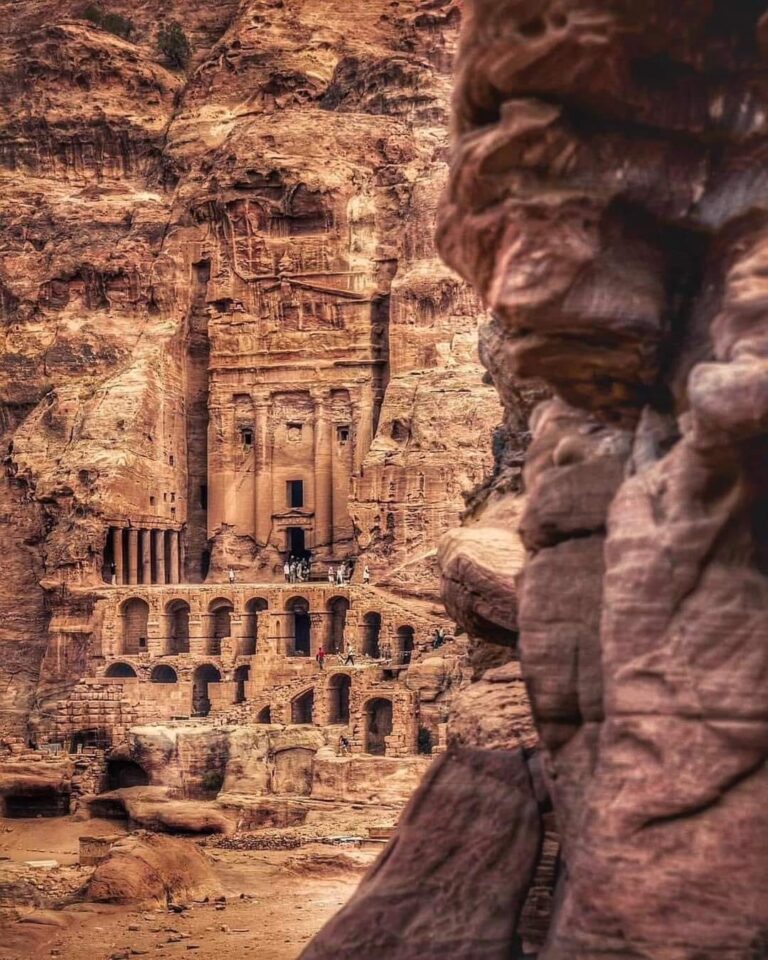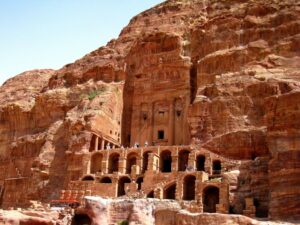Revealing the Dual Legacy of the Urn Tomb at Petra, Jordan: From Regal Resting Place to Sacred Sanctuary


The Urn Tomb, an ancient marvel from the 1st Century CE, stands proudly among the Royal Tombs of Petra in Jordan, a testament to the grandeur of Nabatean architecture. This imposing structure, characterized by its intricate facade and monumental presence, consists of two layers of vaults that add to its architectural splendor.
Believed to be the final resting place of Nabatean king Malchus II, the Urn Tomb carries with it an air of regality and historical significance. The tomb’s design reflects the skilled craftsmanship of the Nabateans, showcasing their mastery in blending architectural finesse with the natural beauty of the surrounding landscape.

Centuries later, during the Byzantine era in the 6th Century CE, the Urn Tomb underwent a transformative journey. In a fascinating shift of purpose, the Byzantines repurposed this ancient mausoleum into a place of worship, converting it into a church. The adaptation of the tomb into a sacred space by the Byzantines not only speaks to the enduring legacy of Petra but also highlights the evolution of cultural and religious practices over time.
Today, the Urn Tomb stands as a captivating fusion of history, architecture, and spirituality, inviting visitors to explore the layers of its past and appreciate the diverse cultural influences that have left an indelible mark on this iconic site in Petra, Jordan.